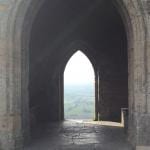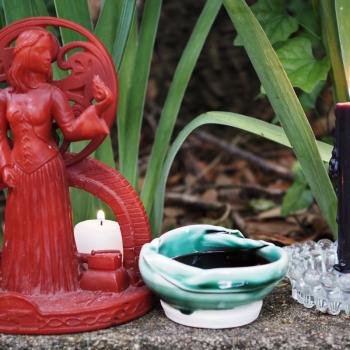Timing
While the Summer Solstice occurs on June 21st, Midsummer occurs around June 24th. The summer solstice is when the sun is the highest point in the sky and when the Northern Hemisphere sees its shortest night. Like Midwinter, the sun appears to stand still for three days while it is stationed at the highest point in its analemma. The date midsummer was most celebrated was St. John’s Eve(June 23rd) and St. John’s Day(June 24th) (Kondratiev, 2003).
Greetings, Sun of the seasons! As you walk in the high heavens, with your strong steps through the endless void, you are the joyous mother of the stars! You sink down in the perilous ocean without suffering harm or scathe; you rise up o’er the peaceful mountains like a young queen in flower.
— Carmina Gadelica(Kondratiev, 2003)
Names & Nature
Midsummer was called St. John’s Eve, Bonfire Night, Oíche na Teine Chnáimh(possibly Night of Sacred Fire, prn EEha na CHINuh K’NEV), or Teine Féil’ Eóin(Fire of St. John’s Feast, prn CHINuh FAIL OWEN) (Danaher, 1972, 134). A week and a half after the solstice begins the month of July, which was called ‘Hungry July’. Midsummer is often nominatively conflated with Bealtaine proper(May 1st), but other evidence has it standing alone. What’s even more confusing is that much of such evidence still points back to Bealtaine/Beltane, though not all. Dáthaí Ó hOgáin says this about it:
“With regard to agricultural luck and prosperity, mention should also be made of the bonfires of midsummer, or St. John’s Night. In Ireland, as elsewhere in Europe, people assembled around these fires and danced, sang and made merry. It was customary in some parts of the country to drive the cattle between two bonfires, in the expectation that this would protect them from disease, and for young men and women to jump over the corners of the fires in order to guarantee marriage and fertility. When the bonfires died down, the embers were scattered on the fields and haggards in the belief that this would bring about growth – a further illustration of the supernatural power often attributed to fire(Ó hÓgáin, 2013, 1141).”
The kindling of two fires, one of them friction and kindled by the other is usually a May 1st custom as is running cows and people through those fires for blessing and purification.
Rich Herbal Lore
However, Midsummer is the time of the year that the Light and Samos(Summer forces) win over darkness. Just as Midwinter is the time that the Cailleach(the winter hag) and forces of Giamos(Winter forces) are victorious and Bride(Scottish Brighid) is imprisoned. This theme is reflected in the herb harvesting customs of the time and the use of non-iron, preferably golden blades to harvest them in folklore. Many herbs tend to grow in shade and darkness, with light overtaking them after St. John’s Eve. Here we may have the golden sun sickle being victorious over the esoteric dark which produces the herbs.

St. John’s wort is gathered during this period. It must be picked from this day to the date of the Old St. John’s Day which had varying dates, the latter of which is the Fourth of July (Danaher, 1972, 148). It is also harvested on the same day and regarded the same way in Wales where it could frighten the devil away(Clancy & Nicholson, 2006, 149). In Scandinavian areas, Sunnawort is used to see the spirits and to ward against them in midsummer(Gundarsson, 2007, 23). Several other herbs were gathered at this time, probably whole classes of medicinal herbs could be at their most potent right at the sun’s crest in the sky. Mugwort, Yarrow, Foxglove, and Figwort were known to be gathered up for the Season in Ireland and all across Europe.
Mugwort was harvested at this time and a person would singe it upon the hearth fire and its smoke can be inhaled as a remedy. The leek was harvested at this time and carried over people’s faces in Portugal. In Wales, it was rubbed on the body, especially before any ceremonial fighting(Clancy & Nicholson, 2006, 150). Scottish yarrow lore points to uses for victory in battle, while St. John’s Wort was called the achlasan Chaluim Chille(Armpit Package of Columba) where it warded against the evil eye, evil witches, butter and luck stealers, and was used as medicine. In Ukrainian folklore, the chief shepherd takes a stick with a burning end and places it in water to ward the evil eye and maleficence. The same thing is done in Ireland with the hearth poker into butter churn to send evil magic back to the butter stealer who crafted it(Parajanov, 1967).
Slovenian lore about nut trees was that they bloomed on Midsummer night making the sound as if a spirit(the lesnik) lived in it(Kropej, 2012, 169). This matches lore about the Thunderer’s fern being found at midnight on St. John’s Eve.

Herbs in folk magic are always harvested, activated, and used with prayers that refer to the lore of the plant. This is one of the few universal rules of the use of herbs in folk magic with nearly no exceptions.
The way herbs were harvested by Gaulish Iron Age druids and nineteenth-century folk magicians in Scotland hardly changed. Pliny the Elder wrote that the charm Samolus(known as brookweed, or water pimpernel) was gathered with the left hand when fasting, without looking behind, and the herb must be put directly into the drinking troughs immediately after. He also writes about Vervian having to be collected without the moon or sun showing, an iron circle is drawn around the root, and it is taken up with the left hand and dried in the shade(151). This is reflected in the Ukrainian tales about Aridnyk(Perun but also the Devil) who god tells to dip his left hand into the sea and flick a drop over his shoulder without looking back and a companion would spring from it. He made all the Ukrainian fairies by dipping his whole hand in and flicking multiple times(Parajanov, 1967).
Gathering St. John’s Wort in the Scottish practices found in the Carmina Gadelica involved finding it by accident, plucked with the right hand saying this rune(charm or song) and then holding it in the left:
Saint John’s wort, Saint John’s wort
My envy whosoever has thee,
I will pluck thee with my right hand
I will preserve thee with my left hand,
Whoso find thee in the cattle fold
Shall never be without kine.
Herbs and roots, while harvesting them, are treated with great praise; they’re called ‘great renown’ and ‘splendid’. The intent of the charm was often told to the plant when it was harvested. The following yarrow charm is one such example.
Yarrow was used in marriage divining by dream when plucked and was accompanied by this or similar charm and then put under their pillow:
Good morrow, good yarrow, good morrow to thee,
Send me this night my true love to see,
The clothes that they’ll wear, the color of their hair,
And if they’ll wed unto me.
I modified this charm for the times and with my intersectional sensibilities of today.
Deities of Midsummer
Belenos’ association with Beltane through the name of the holiday, is extended into this herb harvesting lore and custom of Midsummer. Belenos is related to the hen-bane plant which used to be called belenuontion, bellinuncium, or bellenium. Interesting that this was also called Apollo’s Herb. Apollo has been related to several deities but most notably relevant here is Apollo Vindonnus which seems to be a healer figure we’d expect Belenos to be(Green, 1997). Giving these properties to our Bealtaine god of shining divinity: Dago-Deiwos or the Dagda is singularly appropriate to his household in Brighid because he is the Fire and Lightening God as his daughter is the god of hearth fires.
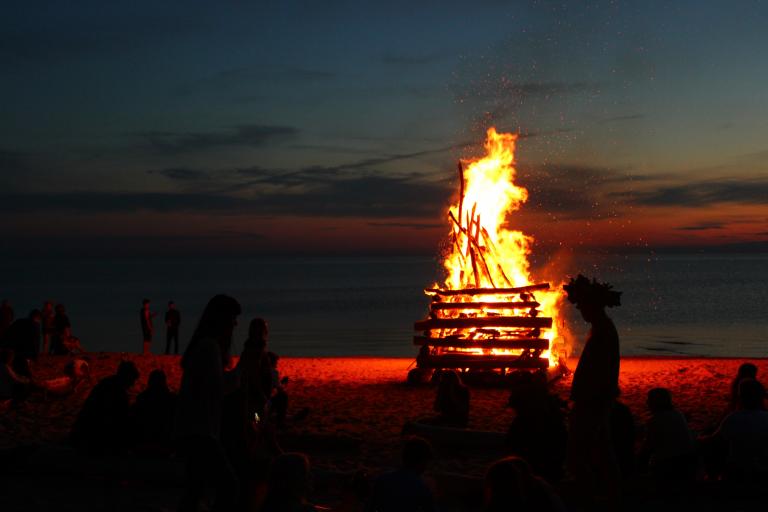
These themes sprout at Bealtaine but fruit at Midsummer. This is comparatively supported in the figure of the fire keeping Kresnic who happens to be a very amorous son of the Thunderwer who is married to his sister in Slovene folklore. The Kresnic is a ritual role of keeping the midsummer fire, signifying the relatedness to the traits of the Dagda’s sons Aed and Angus that we’re looking for for this specific point in the year. And Angus in Scottish variations on the folklore is both the brother and lover of Brighid who fights the winter forces to bring about this victory. Since this midsummer rite is in honor of Perkun, the Kresnic’s father by de-historization of folkloric into mythical, we have outside support that the Midsummer fire is dedicated to the Indo-European(IE) Thunder(Šmitek, 1998). Mikhailov goes further and really does the legwork to illustrate that the Kresnic is Perun and the Proto-Slavic Indo-European Thunder-Striker. Slovenes of Gorica thought that these peak faring witches would fight with the Kresnic and any 12th child who was also called a kerstnik on Midsummer’s Day. This is reminiscent of the Thunderer fighting the Storm Hags of Winter. Indra, the Vedic Thunderer fights the demons Ahi(also known as the dragon Vtra) and Kuyava(the harvest spoiler).
Adding to this, we’ve seen how the Sun in IE thought is the eye or lamp of Dyeus, it was the eye of Varuna and Wodan(Hardwick, 1872, 146). While Wodan/Odin’s Lug like traits are shared with Lugh, his Varuna-like traits, epithet class, seership, and magic belong to the Dagda. Odin, Varuna, and Dagda all fill the archetypal ‘Father’ role. Dagda is not the father of the gods, but the acting father of the pantheon. The Kresnic’s involvement here and the amorous nature of the Feast with its marriage associations from several directions means another main deity of our reconstructed pagan rites ought to be Angus who gives aid to lovers.
Reconstructionists and folklorists who say that Dagda isn’t the All-Father because he not the father of all the gods miss that Zeupater(sky-father), Jupiter(sky-father), Varuna Ptr(covering/surrounding father), and the All-Father Odin are also not direct fathers of the gods. They quintessentialize godhood itself. That’s why God is a title of Odin which was given to the germanic priest as Godar/Godi and Dyeus/Dyaus is actually sourced for many of the names of the other gods including his daughter Usas by way of *Aeusos and is the source for the word deity.
Dagda seems to be Dyeus and *Perkwunos combined in the guise of Dago Deiwos and Succelus, or if you believe Celts From the West, they are offshoots of him. Originally a patriarchal religion, Indo-European and Celtic paganism are overseen in the household by the father. Even in medieval Irish homes, women sat on the prescribed left maintaining the fire and if it went out, the eldest Father of the family was to rekindle it if no embers were to be borrowed from a neighbor. But there is a ‘Father’ proper of all the households who is the Chief of the *Wiks(Village)(Serith, 2007, 102). The best reconstructable word for priest in Proto-Indo-European *bʰerǵʰ-(to become high, to elevate[like a hill or mountain]) from the root √bṛh (“to grow, swell”) from which Brighid’s name is derived. The Celtic Gods reflect this same structure. Being the Good God, able to match all the other gods in battle by himself, Dagda’s original place is Chief Father, Father among fathers. And therefore Priest of Household Priests, and eventually Druid of Druids(Priest of priests of household priests). Dagda is thus the penultimate magician over sacred fires.
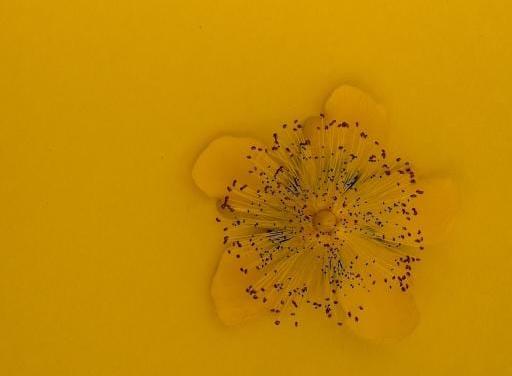
It is imperative that we fix toxic elements that Patriarchal religion brings and some of the same things we’re doing now with intersectionality also work in paganism. Divorcing gender and sex from any role is the first step. The ancestral roles are within us all. We can combine them, mix them, weave them. You can be a hearth keeper and the householder at the same time, or you can make new roles that fit with the lore. We have many Sovereigns who are women, however, to say they’re treated the same as the men would be to ignore a whole lot of folklore and modern behavioral problems. Lots of men want to worship a Strong Woman™, but it becomes another thing when she starts asking for consistent results and holding you accountable like other men in your life do. We have a lot of work to do but we can bring these ideas forward in healthy ways.
We might attach other herbal gods such as Airmid and Miach and their father the Dian Cecht to our Midsummer worship themes. As leeches(healers), they form an essential part of herb collection at this time. So they’re good deities of the occasion, and the relationship Miach and Dian Cecht have is reminiscent of that between Asklepios and Apollo (Kondratiev, 2003). Asklepios’ ability to resurrect people disturbed the gods and like Miach, he met a tragic end as a result. Most people think Dian Cecht is jealous of Miach, however, the myth says that Miach used a perverse or evil cure. Since Belenus’ association with henbane is called apollo’s herb, and Apollo and Asklepios share a relationship, then Belenus like Canta, just another name for Dian Cecht. So Bels fire is Dian Cechts fire. Bealtaine is the Leeches fire. Midsummer is also a leech’s fire. Both are about purity, healing, and blessing. If this isn’t the case, at a minimum we’re looking at a festival that is about the Thunder and his Children.
Customs and Traditions
The Midsummer fire would be maintained from sunset when it was lit until after midnight. Accompanying this bonfire were prayers to the divine to secure good crop blessings. The oldest person around kindled the fire with this or similar charm:
In onóir do Dhia agus do Naomh Eoin, agus chun toraidh agus chun tairvhe ar ár gcur agus ar ár saothar, in ainm an Athar agus an Mhic agus an Spirid Naoimh, Amen.
In the honor of God and of St John, and of increase and profit of our planting and our work in the name of the Father and the Son and the Holy Spirit, So be it (Danaher, 1972, 139).
My Paganized Version:
In onóir do Dagda agus do na nDéithe, agus chun toraidh agus chun tairvhe ar ár gcur agus ar ár saothar, in ainm an Tine agus an Tobar agus an Cránn Naofa, Bíodh sé amhlaidh.
In the honor of Dagda and of the Gods, and of increase and profit of our planting and our work in the name of the Fire and the Well and the Sacred Tree, So be it.
Neglect in either the fire or these prayers, in folk belief, would ensure bad weather and yields in produce and potentially sickness in cattle. When weather and crop blessing prayers began at the communal fire before any merriment occurred, sunwise circumambulation or kneeling was done with them (Danaher, 1972, 140). During these prayers, people may count on rosaries or use pebbles. Every so often, more fuel would be added to the fire and when the fire would flame up people would cheer.
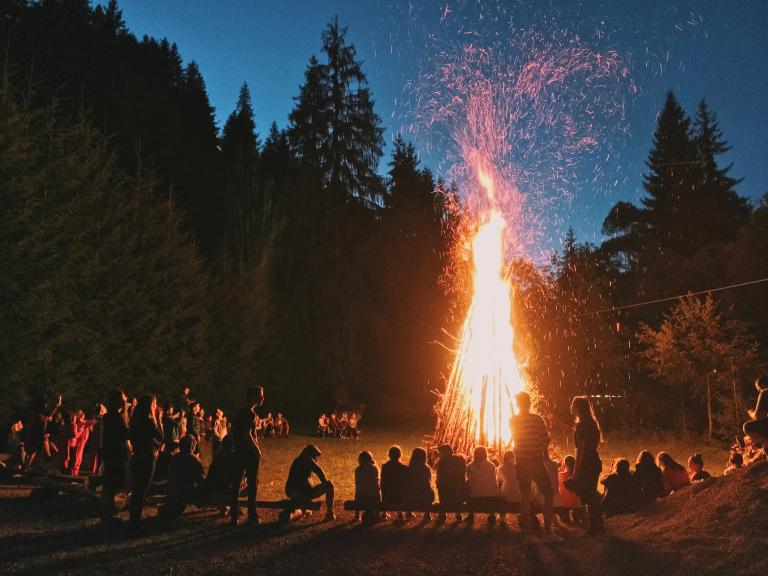
After the midsummer fires were kindled, holy water was sprinkled on it by the oldest person present in some areas or by the youngest person in others (Danaher, 1972, 142). A straw effigy was made either on a pole or sitting on a fence and burned.
Midsummer marked the beginning of safe swimming in certain rivers(Danaher, 1972, 135), and we’ll see later that water goddesses later turned spirits are the cause. Prayers to ancestors were never neglected for certain regional celebrations. Some midsummer practices took part in bonfires near holy wells and grave-yards. One custom is to collect hocus weeds from the river, strike your friends with them and then burn the hocus in the Midsummer Bonfire. Scattered on crop fields were ashes from the fire after it went out the next morning or day. Torches were carried through the field and then tossed onto the Midsummer Bonfire. If a home was built between Bealtaine and Midsummer, care was taken so that the first hearth fire was taken as coals from the community’s bonfire. This is shared in the local folklore in Golac in Čičarija, where on Midsummer’s Eve, water was offered to Baba, a stone goddess before ashes and embers were given next to the monolith, around which the fire was kindled. The treatment of the Baba procession resembles Gundarsson’s description of the Freyr procession that occurs at the same time.
By the 1800s and early 1900s, these practices would have mostly died out and were told about as tales around home turf fires. But when they were carried out, they would be carried out by young people where most of the elders had lost interest in them (Danaher, 1972, 135).
People would jump over the fire and elders could divine the jumper’s past ill deeds from the way of the jump and flicker of the flames. It was this way that one’s misdeeds could be revealed to the community, or at least the threat of it is strongly present. Not only were the communal ‘public’ fires of a whole town, parish or village; but there were private fires for use in personal production and blessings and wardings. The public midsummer fires were noisy and musical while the private family fires were serious events of religious significance. Any old junk that could burn was put into the communal bonfire including tar barrels and treated wood that used to be parts of ships and sometimes old bones (Danaher, 1972, 138). Tires were even used as pranks when the smell blew by and irritated villagers.
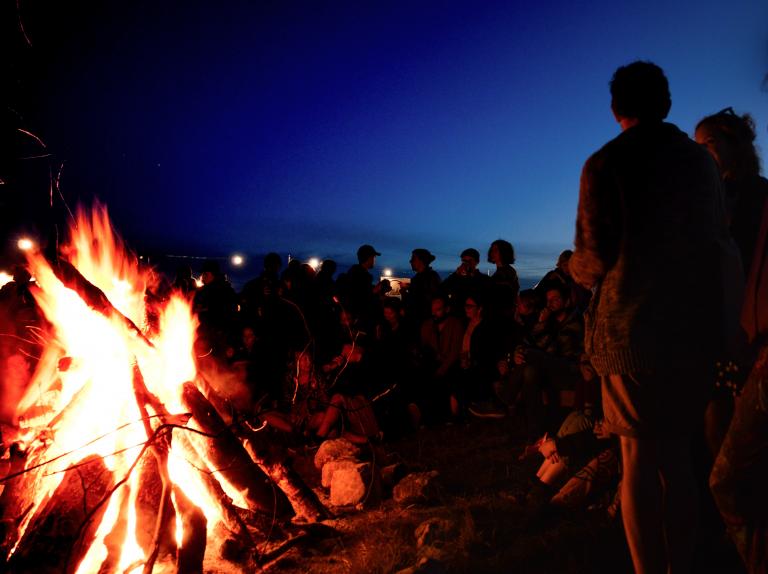
Prior to the festival itself, the youth would go door to door and ask for fuel contributions, and when returning home would throw ashes on the thresholds of those who gave them nothing and left partially burned sticks for those who were. While most of the traditions were observed by the younger, all ages came out to the fires.
The private fire was lit at dusk and a brief home ritual was performed in the fields and the fire was allowed to burn out while its attendants went off to join the communal fires.
People took ashes and embers from these fires or the public ones and put them into every field. The night started with this family fire at home then later involved a communal fire on communal land which is then transferred back home by some means. Earlier we mentioned partially burned sticks, presumably torches. The ashes and embers were seen as containers of luck which, if were stolen, would also have the luck of the house or its increase stolen through later charming those ashes. The torches were used in a procession, their names were St. John’s wisps or were regionally named yet the whole family took part in lighting them from the family fire and carrying them to the ‘big’ fire (Danaher, 1972, 144).
The main dish in Connaught for midsummer was called ‘goody’ which is hot milk with sugar and spices and bread all heated in a cauldron on the bonfire or a smaller fire nearby. Consumption of sweets and home-made whiskey called poitín (poCHEEN) and kegs of beer were appropriate for the season and were shared among the participants (Danaher, 1972, 143).
Cattle would be gathered in fields over which the communal fire’s smoke had risen (Danaher, 1972, 146). Embers and brands were put in dairy, churns and coals touched to the backs of cows, the hairs of their tails singed or bathed and pat down with ashes, to bring them all good luck, to keep the luck they have, and to ensure further blessings such as to allow the elderly in the home to die peacefully. Blending water with midsummer ashes was a potent medicine against elf-shot (Danaher, 1972, 147). Of course, it was customary to bring some of the coals or embers from the public fire like Samhain and Bealtaine. Ashes from the coals brought back would be drunk in all kinds of healing potions. To neglect to bring home embers or ashes from the public fire was to invite misfortune.
Ritualized fighting at the end of midsummer processions was long discontinued from Co Limerick tradition but is a practice we see in indigenous peoples all over the world today. In this case, as with other cases, the rivalry in these fights falls on two sides of a line between tradesfolk who live in the north and south neighborhoods. There are South American examples of this at the Takanakuy festival in Peru which seem to reveal a secret about ritualized fighting. Ritualized violence in any tradition mitigates more escalated rivalries. If someone who fights at midsummer offends you, it’s more likely you’ll wait until those fights to gain sanctioned vengeance. Otherwise, in a society without it, you might confront someone in a non-sanctioned way.
These processions were outfitted with musicians and other forms of merriment along with the apropos dressings of the season. Other customs include patterns(religious rites) at St. John’s Well and whatever local well was near where you lived. Religious rites and folk magic happened at these wells that local observers considered pagan in nature, and the drinking of the water of these wells allowed people to claim they had gone mad allowing for an excuse from the bonfire debauchery(Evans, 1988, 264).
The cuckoo in folklore flew away to Spain and that is why you do not hear its call beyond midsummer. Bonfire jumping takes place in every country in Europe for Midsummer. Such a distribution of custom means it has a common root that could be potentially neolithic or bronze age IE which I think is most likely.
Rent payments of meadow grass and yellow flowers are made to Manannán Mac Lir, Son of the Sea by the Manx people at Midsummer on the Isle of Man. They go to his grave and perform remnants of old rites where rushes are placed on two hills(Macculoch, 1911, 77).
Procession to the Peak
Midsummer and St. John’s Eve in the folklore of the Indo-European language family has a whole lot of belief about witches and spirits meeting for their own rites. A will o wisp leads Faust and Mephistopheles up the mountain to the witches revelry on Walpurgisnacht in Goethe’s version of the story. A Night on Bald Mountain from Fantasia, originally called St. John’s Night on Bare Mountain, is played in music rooms at schools for Halloween but it is actually about Midsummer and the night before, St. John’s Eve. The tone poem is cobbled together from previous lore that is obscured but what we do have that keeps us from dismissing it is the Hutsul belief that the Adirnyk also summoned spooky spirits and witches to Holervia Peak in southeast Ukraine. It is nearly universal in medieval Europe that Midsummer is a witch’s Sabbath. German belief that envisages witches flying past Midsummer or Walpurgisnacht fires heading to a peak called the Brocken. In Danish folklore, sitting under a tree on Midsummer’s Eve will allow the sitter to see the King of Elfland(Freyr/Ing) riding by with all this retinue(Gundarrson, 2007, 64).

On Midsummer Eve, a humanized version of the Goddess Áine as a ‘knowledgeable woman’ dies and all of the fairies in Ireland process toward Cnoc Áine in County Limerick, carrying torches in her honor (Danaher, 1972, 153). Fertility rites to Áine were performed up until at least the 20th century (Macculloch, 1911, 66). The ancient pagan belief that the otherworldly and nature spirits process to the highest peak in the region begins to emerge.
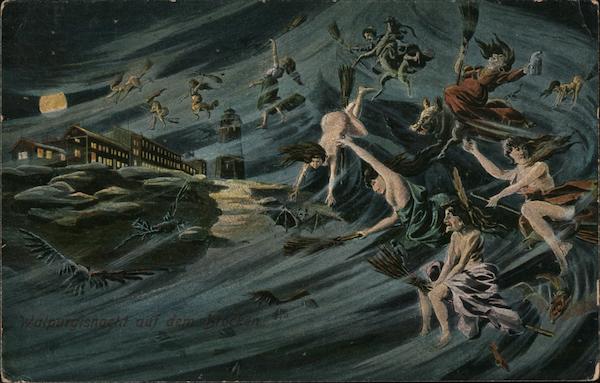
Similarity to Bealtaine
Kay Muhr of the Ulster Place-Name Society says Toland associated druidic fires with Bealtaine and Midsummer and emphasizes the blessing returned to the people by these religious interactions. She quotes this in her paper Titled “Bealtaine in Irish and Scottish Place-names”:
At the house where I was entertained, it was told me, that we should see, at midnight, the most singular sight in Ireland, which was the lighting of fires in honour of the sun. Accordingly, exactly at midnight, the fires began to appear; and taking the advantage of going up to the leads [?heads] of the house, which had a widely extended view, I saw on a radius of thirty miles, all around, the fires burning on every eminence which the country afforded. I had a farther satisfaction in learning, from undoubted authority, that the people danced round the fires, and at the close went through these fires, and made their sons and daughters, together with their cattle, pass through the fire; and the whole was conducted with religious solemnity.
The similarities Bealtaine and Midsummer have is reminiscent of the similarities Michaelmas and Lughnasadh have, and the smoking gun is St. Michael’s cognate relationship to Lugh. It’s as if the Celtis did indeed have an 8 spoked wheel, but the solstices and equinoxes are just lesser repetitions of the Fire festival before it, making only four major themes in the year with skewed duplicates. Midwinter is a skewed Samhain, while Auld Wives Day is a continuation of a skewed Imbolc. So far, this is what the evidence tells us.
Midsummer fires occurred at places called Bealtaine in Ulster, Gollan Hill, and Bessy Bell. Like Michaelmas fires, Bealtaine fires, Samhain fires, Lughnasadh fires, and Midwinter fires, the fires of Midsummer are on raised hills(Muhr, 2016).
Ritualized Drowning
There’s a lot of water-related Midsummer lore from human sacrifices in Germanic regions and later folklore from the German Saale and Spree(specific rivers) to the Norweigan Nokk(a spirit), both are different names for the same water spirit that claims a life once a year on either Walpurgisnacht or Midsummer(Gundarsson, 63). The Poet and the Spae-wife says “Many a fisherman of the Elbe knows better than to launch his boat and trust himself to the treacherous river on Midsummer Day.” (Allen, 1960, 107). On Galician Midsummer, the water spirit called the Xane would display her wares at the mouth of the nearest cave to her fountain displaying mythical farming tools(like shears) behind a booth(Carrín, 2011, 14).
In England, it was the Cam(river) at Cambridge. Milk and other offerings are placed for the Nokk so it will not choose its sacrifice. A Ukrainian effigy of the amorous Kupalo processed and burned or drowned, while in Greek areas it was the amorous Adonis that was washed on the 23rd(Burkert, 2006). A Scandinavian bread effigy would be plunged into the local river with flowers(Gundarrson, 1993, 90), also a sign of love, and now we know why the very pagan and vibrant midsummer festivals were associated by the church with Feast John the Baptist.
The Kupalo effigy is made of straw and dressed in women’s clothing, complete with jewelry and ribbons(Dixon-Kennedy, 1999). At Uppsala they’d plunge a man into the river and if he disappeared they’d draw a fortuitous omen(Allen, 1960, 230).
Folks jump over the midsummer fire with the effigy and on the next day, it is stripped and thrown into a stream. If we squint and combine this with the plot of Midsommar, we can begin to get a sense of the original practice here of using a real person to preemptively mitigate the water spirits’ wrath. Horses were sacrificed at midsummer in both Germanic and Celtic paganism (Monaghan, 2004, 249)(Gundarsson, 1993, 99).
One interesting bit of folklore comes from the Slavic Hutsuls who tell us that when a person drowns and becomes a water spirit, they free the nymph that haunted the place before it. So a water spirit is sure to encourage you to drown because it grants it its freedom, leaving you to be the genius loci. This is possibly one of the ways people become fairies upon dying. The Hutsul water spirits would come out on the full moon to dry themselves. Crosses were placed at the location to warn boatmen and milk and bread were left. These spirits were pale with scales and are similar beings as the rusalkas which hunt in packs(Parajanov, 1967).
Love, Marriage, Orgies
Marriage Divination seems to be part of every Celtic holiday that became a Saint’s Feast. But Midsummer has a stronger connection with marriage in the wider Indo-European lorebase.

It’s been suggested that Midsummer’s debauchery was originally orgiastic. Gundarsson suggests that Turgeis’ grave orgy took place at Midsummer. Swedish St. John’s Eve customs involve courtship. When Irish people took their cows up to the mountains for their summer/winter alternation at Bealtaine, the elders returned to their winter homes and the young people that remained would court each other for the summer. In ancient times, the practice would still be alive but might involve orgies. Hutsuls played fast and loose with infidelity and their midsummer was originally orgiastic.
In Lancashire England, St. John’s Eve was thought to infuse marriages with potent vitality. Women would fast on the eve and at midnight would layout a picnic including beer. They leave the door open and the one who’ll they’ll marry might be seen coming to eat the meal(Hardwick, 1872, 146). A German Poem for this theme reads as follows, as far as I can tell this first appears in Vide Hone’s 1827 “Every Day Book,” Vol. I., p. 427:
The young maid stole through the cottage door,
And blushed as she sought the plant of power.
“Thou silver glow-worm,
O lend me thy light,
I must gather the mystic
St. John’s-wort to-night;
The wonderful herb whose leaf will decide
If the coming year shall make me a bride!”
And the glow-worm came
With his silvery flame,
And sparkled and shone
Through the night of St. John.
And soon as the young maid her love-knot tied
With noiseless tread
To her chamber she sped,
Where the spectral moon her white beams shed,
“Bloom here, bloom here, thou plant of power,
To deck the young bride in her bridal hour!”
But it drooped its head, that plant of power,
And died the mute death of a voiceless flower ;
And a withered leaf on the ground it lay,
More meet for a burial than a bridal day.
And when a year was passed away,
All pale on her bier the young maid lay!
And the glow-worm came
With its silvery flame,
And sparkled and shone
Through the night of St. John ;
And they closed the coki grave o’er the maid’s cold clay.
Will o the Wisps are the glow worm mentioned in this poem. The following poem is from Goethe’s Faust:
Will-O’-The-Wisps:
We come out of the swamps where we
Were born without a penny;
But now we join the revelry,
As elegant as any.
Will-o-the-Wisp
Many tales center around the death of children who become spirits. Groups of unbaptized children were believed to make a procession as lights just like the British Will-O’-the-Wisp(Kropej, 2012, 183). These same spirits were seen as blackbirds who sat upon willow trees. This brings us back to the Snooty Baba who is the Diva-Baba(Goddess midwife) among the Hutsuls, the Bohinya who keens and steals human children to join her fairy troop(Parajanov, 1967).

Comparatively supported Celtic Midsummer customs
- Processions
- Torch Bearing and Coal Carrying
- Ash and ember scattering
- Bonfire parties after your rites
- Fire lighting prayers
- Fire jumping
- Herb Harvesting
- Securing bargains from spirits, seeing spirits
- Asking for blessings, mitigating chaos
- Effigy Burning and Drowning
- Amorous courting(through Christian times), Orgies(in ancient times)
Ritual Themes
- Purification from Sickness
- Crop Blessings
- Fertility
Deities
- Dagda
- Angus
- Áine
- Manannán
- Dian Cecht
- Airmid & Miach
Sources
Allen, William E. D. The Poet and the Spae-wife: An Attempt to Reconstruct Al-Ghazali’s Embassy to the Vikings. Dublin: Figgis, 1960. Print.
Burkert, Walter. Greek Religion. Cambridge: Harvard UP, 2006. Print.
Carmichael, Alexander. Carmina Gadelica Vol III. Edinburgh: Scottish Acad., 1983. Print.
Carrín, Cristobo De Milio. “The Widower and the Goddess.” The Widower and the Goddess (n.d.): 1-20. Print.
Clancy, Shae, and Francine Nicholson. Land, Sea, and Sky. N.p.: Shae Clancy, 2006. Print.
Danaher, Kevin. The Year in Ireland:. Cork: Mercier, 1994. Print.
Dixon-Kennedy, Mike. Encyclopedia of Russian & Slavic Myth and Legend. Santa Barbara, CA: ABC-Clio, 1999. Print.
Evans, E. Estyn. Irish Folkways. London: Rutledge & Kegan Paul, 1957. Print.
Frazer, James George. The Golden Bough. London: Macmillan, 1966. Print.
Gundarsson, Kveldulf. Elves, Wights, and Trolls. New York: IUniverse, 2007. Print.
Gundarsson, Kveldulf. Teutonic Religion: Folk Beliefs & Practices of the Northern Tradition. St. Paul (Minnesota): Llewellyn, 1993. Print.
Hardwick, Charles. The Early Inhabitants of Lancashire and the Neighbouring Counties, and Remains of Their Mythology and Local Nomenclature. Liverpool: n.p., 1870. Print.
HÓgáin, Dáithı́ Ó. Irish Superstitions. Dublin: Gill & Macmillan, 2002. Print.
Jones, Mary. “Oengis Mac Inc’Og.” Oengus Mac Ind-Og. N.p., 2003. Web. 12 Dec. 2017.
Kondratiev, Alexei. The Apple Branch: A Path to Celtic Ritual. New York: Citadel, 2003. Print.
Littleton, Covington Scott. The New Comparative Mythology: An Anthropological Assessment of the Theories of Georges Dumezil. Berkeley: U of California, 1982. Print.
MacCullough, J. A. The Religion of the Ancient Celts. Edinburgh: T & T Clark, 1911. Print.
Monaghan, Patricia. The Encyclopedia of Celtic Mythology and Folklore. New York: Infobase Pub., 2008. Print.
Muhr, Kay. “Bealtaine in Irish and Scottish Place-names.” The Journal of Scottish Name Studies 10 (2016): 89-126. Print.
Parajanov, Sergei. Shadows of Our Forgotten Ancestors – Notes. N.p.: n.p., 1967. Print.
Puhvel, Jaan. Comparative Mythology. Baltimore: Johns Hopkins UP, 1993. Print.
Rees, Alwyn, and Brinley Rees. Celtic Heritage: Ancient Tradition in Ireland and Wales. New York: Thames and Hudson, 1994. Print.
Telban, Monika Kropej, Nives Sulič, and Valentina Batagelj. Supernatural Beings from Slovenian Myth and Folktales. Ljubljana: Založba ZRC, 2012. Print.
Šmitek, Zmago. “Kresnik: An Attempt at a Mythological ReconstructionKresnik: Poskus Mitološke Rekonstrukcije.” Studia Mythologica Slavica 1.0 (2015): 93. Print.




